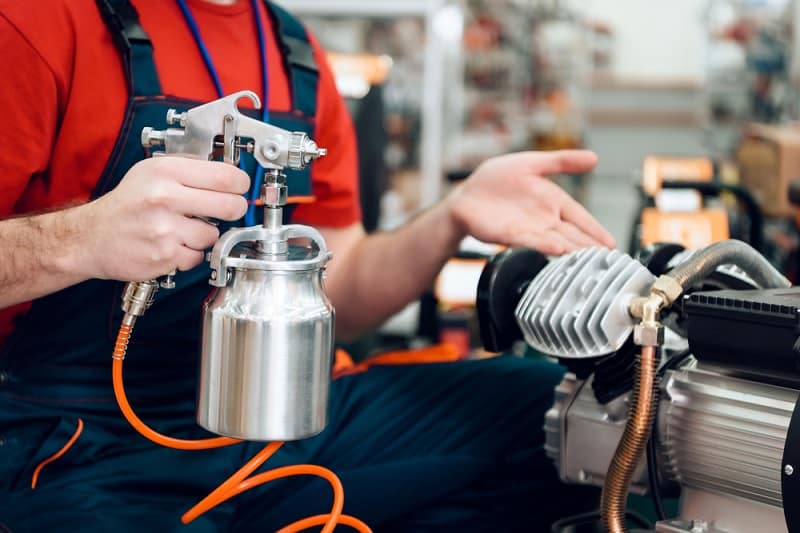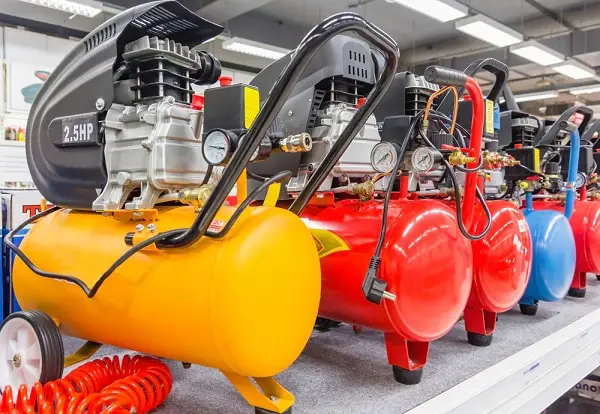
When to Use an Air Compressor?
There are many household tools your money can buy – a wrench set, a toolbox, a new lawnmower, you name it. But if you haven’t considered buying an air compressor, consider this a subtle nudge. Of all the household tools you could possibly buy, an air compressor may just be one of the best ways to spend your money. It’s that one thing you never knew you always wanted.
Don’t believe us? We’ll prove it. Let’s take a look at four situations where having an air compressor comes in handy. Afterward, we’ll share some basic air compressor drainage tips to help you get started.
1. Auto Repairs
Making a visit to the local mechanic often comes with an unwanted and hefty bill to pay. Have you ever been interested in doing some of your own repairs for your vehicle? While larger and more complex tasks (like replacing a transmission) are not very feasible, you can get away with performing smaller repairs on your own, such as changing a fuel filter or performing a general tune-up. There are hundreds (if not thousands) of videos on YouTube to help you get started.
2. Nail Gun Use
If you’re someone who likes to build things or perform your own home carpentry work, a nail gun is probably your sharpest tool in the shed. Well, unless you’ve already bought an expensive battery-operated nail gun (which usually costs anywhere between $300 and $600), most traditional nail guns need an air compressor to work. Pneumatic (air pressurized) nail guns are easier to use, lighter, and lasts considerably longer than their battery-operated counterparts.
3. Paint Jobs
Sure, there’s absolutely nothing wrong with painting with a brush. But if you’re hoping to apply an even coat and save yourself lots of time, using a spray paint system is easily the way to go. Spray guns used in painting require an air compressor in order to operate, which gives you yet another handy reason to get a compressor. Spray-painted jobs are typically smoother and of higher quality compared to brush jobs.
4. DIY Projects
One of the best things about an air compressor is that it is extremely versatile. Aside from the uses listed above, an air compressor can be used for many other jobs, tasks, and many types of air tools available on the market. Air compressors help with workshop cleaning, paint jobs, carpentry, or even simply putting air in your tires when they start losing air. For virtually hundreds of jobs and tasks, your air compressor will help you along the way.
When to Drain an Air Compressor?
In order for your air compressor to have a long life, regular maintenance is absolutely essential. One of the easiest forms of maintenance is to drain the moisture building in the compressor tank.
Due to the high pressure in the compressor, water vapor or humidity tends to be condensed into water, which sits at the bottom of the tank. If you allow the water to sit for too long, your tank may eventually rust from the inside out, weakening the walls as time goes by.
To drain your air compressor, first make sure the compressor is turned off, then reduce the pressure in the tank to 10 PSI. Then, open the tank drain valve and allow the moisture and water buildup to drain from the tank. Once finished, close the tank drain valve. If you don’t want to drain your tank manually, you can invest in an automatic drain for as little as $15.
Whether you drain your air compressor tank manually or automatically, we recommend draining it daily while it is in use. This quick little maintenance act will add years to your compressor so you can enjoy it for that much longer.
Related Video:
https://www.youtube.com/watch?v=O0uYpuCYFwg

